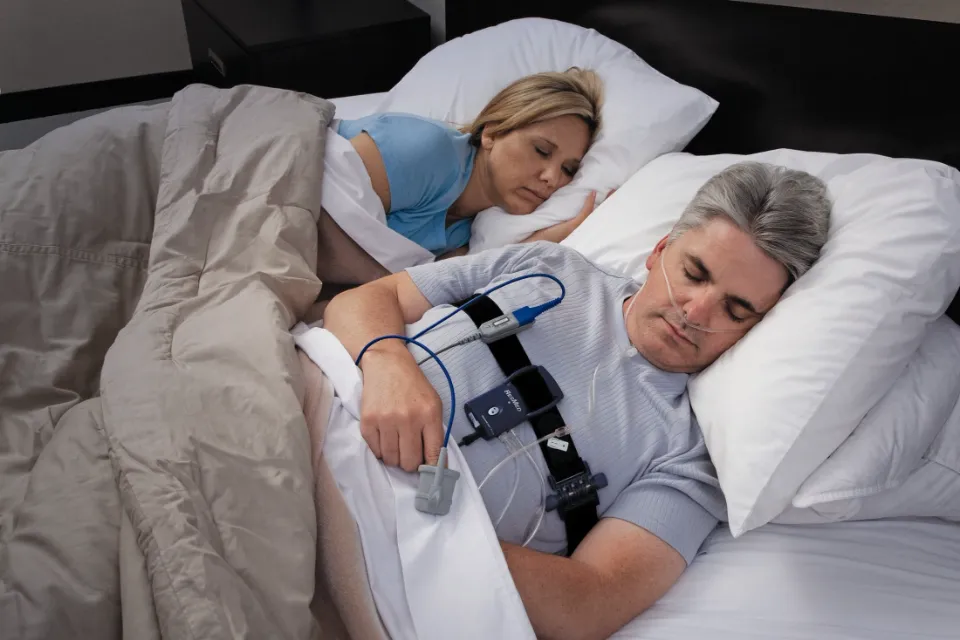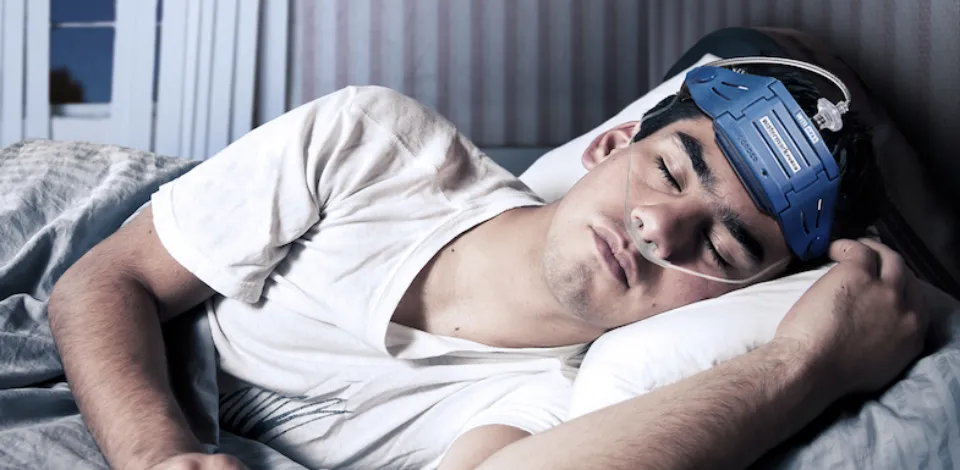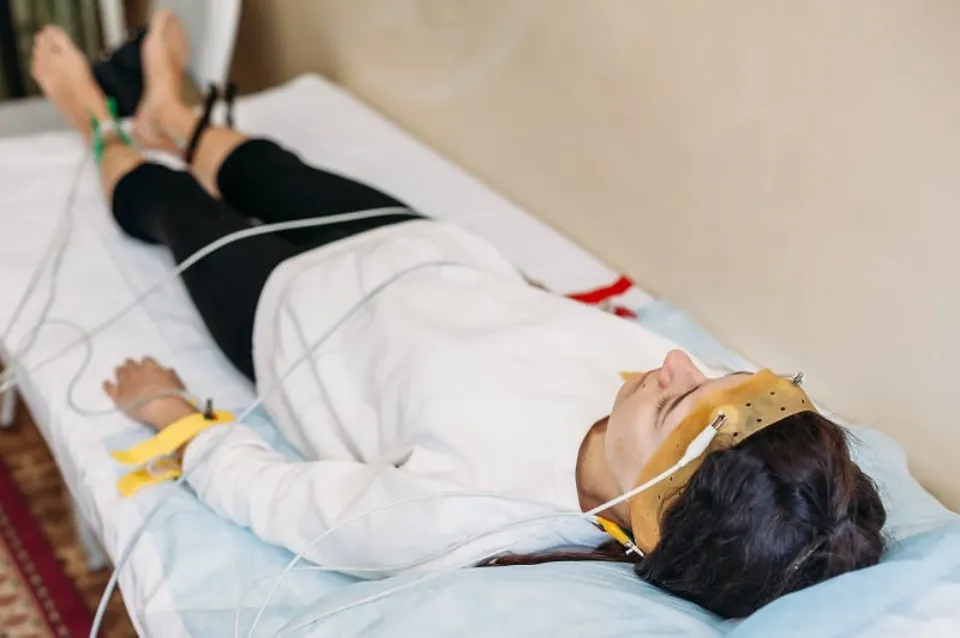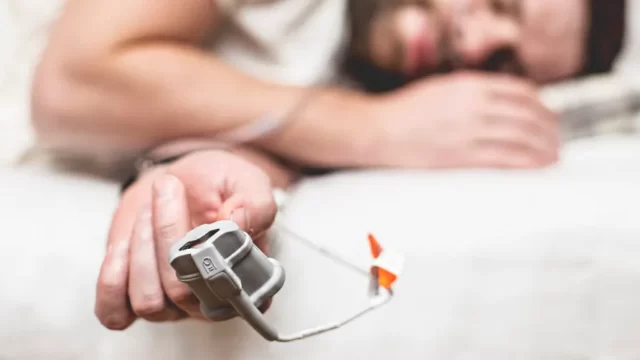We go over the benefits and drawbacks of home sleep studies, how they are conducted, and some advice on how to do so.
Obstructive sleep apnea may be found using one of two types of studies. The first is polysomnography, or overnight sleep study, performed in a lab or hospital. The second is a home sleep apnea test National Library of Medicine, Biotech InformationThe National Center for Biotechnology Information advances science and health by providing access to biomedical and genomic information.
Home sleep apnea tests do not measure brain waves while a person is sleeping, but they do measure other things that can help doctors determine if a person has OSA. Please read this blog to learn more about how a home sleep study work.
How Does a Home Sleep Study Work?
Depending on who orders or performs the test, sleep apnea at home can be different. In general, the procedure entails meeting with a medical professional, receiving the necessary tools, performing the test at home, and then having another meeting with your doctor to go over the findings.
Meet With Your Doctor
Make an appointment with your doctor if you have symptoms of OSA or another sleep disorder. You might think about bringing in a sleep journal that details your sleeping patterns. A sleep specialist or sleep clinic will be recommended to you by your doctor if they suspect you may have sleep apnea.

Meet With Your Sleep Specialist
Before deciding on the best course of action, the sleep specialist asks more thorough questions. You may ask them questions about home sleep apnea testing and how it compares to polysomnography in terms of cost, insurance coverage, convenience, and accuracy. They will order the test if they determine that home sleep apnea testing is the best option for you.
Obtain Home Sleep Apnea Test Equipment
Either someone will call you, or your sleep specialist will give you instructions on how to get in touch with a sleep lab or clinic to get the tools you need for your test. Staff members will demonstrate how to use each piece of equipment when they hand it to you.
Carry Out the Test
Once you have the equipment, you can carry out the test. Put any sensors, such as a nasal cannula in your nostrils, a finger-mounted pulse oximeter, or a band around your chest, on as directed. Try to go to bed and wake up at regular times, and stay away from caffeine and alcohol because they can interfere with your sleep. If you usually take sleep medications, ask your doctor if it is appropriate to take them the night of the test.
Return the Equipment
Unless you have a disposable test like the WatchPAT One, return your equipment when and where it was originally scheduled by your healthcare providers. The equipment will be delivered to the sleep lab or clinic, and once there, the data will be downloaded and analyzed. The American Academy of Sleep Medicine advises against using algorithms and instead having a qualified professional perform it manually.
Learn the Results
Your medical professional or sleep specialist will go over the findings with you after the data has been analyzed. They might give you a sleep apnea diagnosis and prescribe treatment such as a continuous positive airway pressure (CPAP) machine. Alternatively, they might tell you that your findings were unfavorable or inconclusive. In the case of negative or inconclusive results, you might be asked to undergo an in-lab sleep study.
Pros of a Home Sleep Study

In comparison to in-lab tests, at-home tests for sleep apnea can be more flexible, cost-effective, and convenient.
- Easy access: You might find it challenging to finish an in-lab sleep apnea test depending on where you live, your schedule, and other commitments. Having the equipment brought to your home makes testing more accessible.
- Comfort: You might find the idea of sleeping in a lab unappealing and instead prefer familiar surroundings.
- Flexibility: You might be more likely to take the test if you have the freedom to finish it at home whenever it suits you.
- Lower cost: Due to the lack of onsite technicians, at-home tests are typically less expensive than lab tests. Also frequently covered by insurance are at-home tests.
- Shorter wait: Instead of waiting until a sleep center appointment opens up, you can take the test whenever you’re ready at home. If you receive a diagnosis sooner, you may be able to start treatment more quickly.
Cons of a Home Sleep Study
Even though HSATs may have benefits, they also have some drawbacks.
- No technicians: During sleep, leads or sensors may detach and fail to capture crucial data. With an at-home test, a technician is not present to re-install them or verify that the device is functioning properly.
- More limited data: Because at-home tests do not measure brain waves, they cannot accurately track sleep or arousal. This may lead to underestimating the impact that breathing events have on sleep during the study. These exams are ineffective in identifying other sleep disorders for the same reason.
- Less accurate AHI measurement: A lab sleep test calculates the AHI in a different way than at-home devices do. The calculated AHI value might therefore be lower than it ought to be. This can lead to a missed sleep apnea diagnosis or underdiagnosis.
- Equipment differences: There is no set standard regarding which sensors or algorithms to use across devices. It’s possible that different device manufacturers will use different methods to collect data. This might result in inconsistent results.
What is a Home Sleep Study?

A home sleep apnea test (HSAT) is a 24-hour examination done at home rather than in a medical facility or sleep lab. It can also be referred to as a home sleep test (HST) advances science and health by providing access to biomedical and genomic information, an out-of-center sleep test (OCST), out-of-center (OOC) recording advances science and health by providing access to biomedical and genomic information, or polygraph (PG).
In some people, but not all, this kind of testing can reliably identify obstructive sleep apnea. As it is performed in the comfort of the patient’s home, home sleep apnea testing frequently has lower costs and is thought to be more convenient than an in-lab sleep study.
For a home sleep apnea test, you typically need to pick up specialized equipment from your doctor’s office or a sleep clinic. You then carefully adhere to the guidelines given on how to use the different test devices you were given. You sleep as you usually would, except with specific devices connected to your body to collect data, for at least one night
Is a Home Sleep Study Right for You?
If you meet the criteria for moderate or severe obstructive sleep apnea and do not have other medical conditions or sleep disorders, your doctor may recommend an at-home sleep apnea test for you. Taking a sleep apnea test at home might be a good option for you if you have a hectic schedule, want results right away, or simply don’t like the idea of sleeping in a sleep lab.
A sleep study in a lab is the best way to separate sleep apnea from other sleep disorders because various sleep disorders have similar characteristics.
Talking to Your Doctor About a Home Sleep Study
At your next doctor’s appointment, mention the possibility of at-home sleep apnea testing if you think you might have obstructive sleep apnea. Typically, a primary care physician refers patients who may have sleep apnea to a sleep specialist, who then decides what kind of sleep testing is most appropriate.
Conclusion: How Does a Home Sleep Study Work?
Home sleep apnea tests (HSAT) are also called unattended sleep studies or out-of-center sleep testing. A portable monitor that records and displays various types of information is typically connected to sensors that are attached to your body as part of the test.
Your fatigue, inability to concentrate or difficulty sleeping may already have an underlying cause that you are aware of or are not aware of. What that potential cause might be will be clarified by a sleep study. For the sleep study, there is no need for planning or preparation. You are able to sleep in the comfort of your own bed.
FAQs
Is a Home Sleep Study Accurate?
A home test does not capture the same amount of data as an in-lab test, and it is not as accurate. Obstructive sleep apnea, a common sleep disorder marked by interrupted breathing while sleeping, is typically assessed at home.
How Long Do You Need to Sleep for a Sleep Study?
During a sleep study, almost everyone eventually nods off. Even if you get less sleep than you normally do at home, a sleep study only requires two hours of sleep.

